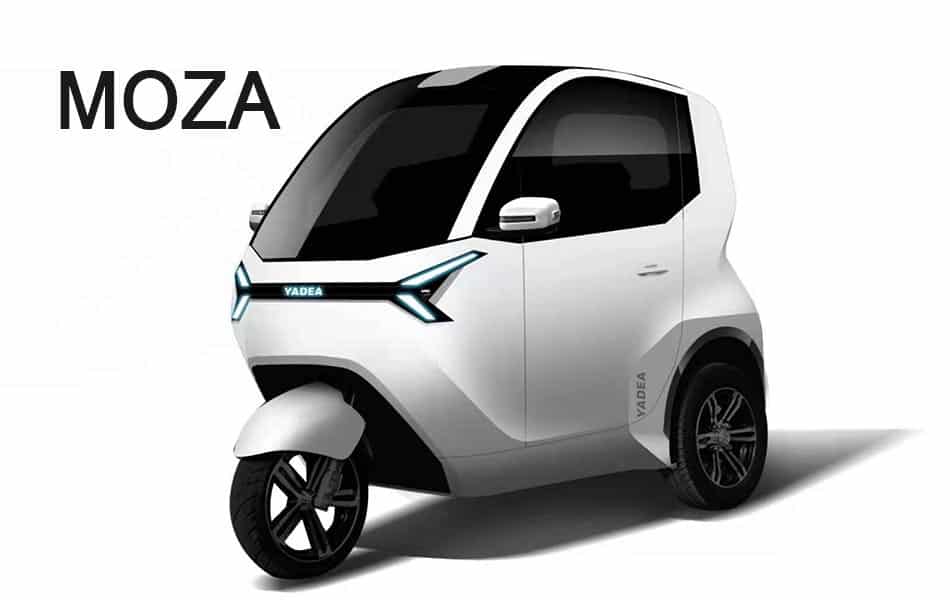Charging Station Install For Hybrid Electric Car In Lithuania ABB
ELECTRIC VEHICLE CHARGING
INFRASTRUCTURE IN EUROPE 2021
Current Infrastructure for EV Charging in Europe
The EU countries are among the frontrunners when it comes to adopting electric mobility. Since electric vehicles (EV) arrived to the market in Europe, there has been a steady increase in the sales of these types of vehicles. Nearly 1.4 million battery electric vehicles (BEVs) and Plug-in hybrid electric vehicles (PHEVs) were registered in Europe during 2020, which is an increase of 137% compared to 2019.
Besides the increased sales of electric vehicles, the EV infrastructure is advancing at a fast pace. Europe has seen a rapid increase in the available infrastructure for charging electric vehicles between 2010 and 2020. However, the number of electric vehicles per charging station has also increased from two in 2010 to 11 in 2020. In other words, 11 cars need to share one publicly available charging station. For electric vehicles to continue their uprising growth and success, more charging stations need to be implemented across the whole of Europe. As the number mentioned above is a Europe wide statistic, let’s take a look at some specific countries and their current infrastructure.
Division of EV charging stations
Across Europe, the infrastructure of EV’s have been quite skewed according to the ACEA 2021 update of the annual ‘Making the Transition to Zero-Emission Mobility’ report. In total there are around 224,237 EV charging stations across the EU-countries. However, three countries account for 70% of all of these EV charging stations across Europe. The Netherlands has 66,665 EV charging points, while France has 45,751 and Germany has 44,538 EV charging points. Together, these countries make up just 23% of the EU’s total surface area.
Runners up are Italy with 13,073, and Sweden with 10,370. The rest of the 27 countries mentioned in the report all have less than 8,500 EV charging points. The countries with the lowest number of EV charging stations are Lithuania with 174, Malta with 96, & Cyprus with 70 public charging points in total. In line with this, it is also noticeable how many EV charging stations countries have per 100km. As you can imagine, increasing the number of charging stations also decreases the fear of driving with electric vehicles across the whole of Europe.
The countries with the most public EV charging stations per 100km are:
1.The Netherlands with 47.5 EVCs/100km 1. 荷兰,47.5辆 EVC/100公里
2.Luxembourg with 34.5 EVCs/100km 2. 卢森堡,34.5辆 EVC/100公里
3.Germany has 19.4 EVCs/100km 3. 德国有19.4辆 EVC/100公里
4.Portugal has 14.9 EVCs/100km 4. 葡萄牙有14.9辆 EVC/100公里
5.Austria has 6.1 EVCs/100km) 奥地利有6.1辆 EVC/100公里)
The countries with the least amount of stations per 100km of road are: 每100公里道路车站数量最少的国家是:
1.Lithuania with 0.2 EVCs/100km 1. 立陶宛,每100公里有0.2个 EVC
2.Greece with 0.2 EVCs/100km 2. 希腊,每100公里有0.2辆 EVC
3.Poland with 0.4 EVCs/100km 3. 波兰,每100公里有0.4辆 EVC
4.Latvia with 0.5 EVCs/100km 4. 拉脱维亚,每100公里有0.5辆 EVC
5.Romania with 05 EVCs/100km 5. 罗马尼亚,每100公里有05辆 EVC
Noticeably, 10 countries have less than 1 EV charging station per 100 km of road. Overall, only 23% of Europe has relatively good coverage concerning EV charging with 70% of all EV chargers. Ideally, you want to have a good spread of EV stations in at least all cities and across all EU highways. The deployment of the stations should be evened out more as currently, obstacles to travel across the EU in electric vehicles remain.
Why do some countries have a higher number of charging points compared to other countries?
According to the ACEA, adapting EV infrastructure highly correlates with the EV market share and with a country’s gross domestic product (GDP) per capita. Which shows that affordability remains a major barrier to consumers in buying EV. Which in turn has a high effect on the availability of charging stations across the country.
This is quite noticeable in the countries with the highest market share of electric vehicles:
1. Sweden – 32.2% (GDP of €45,610) 1. 瑞典-32.2% (国内生产总值45610)
2. Netherlands – 25.0% (GDP of €45,790) 2. 荷兰-25.0% (国内生产总值45,790)
3. Finland – 18.1% (GDP of €42,940) 3. 芬兰-18.1% (国内生产总值42,940)
4. Denmark – 16.4% (GDP of €53,470) 4. 丹麦-16.4% (国内生产总值53,470)
5. Germany – 13.5% (GDP of €40,070) 5. 德国-13.5% (国内生产总值40,070)
Countries with the lowest market share of electric vehicles: 电动汽车市场份额最低的国家:
1. Cyprus – 0.5% (GDP of €23,580) 1. 塞浦路斯-0.5% (国内生产总值23,580)
2. Lithuania – 1.1% (GDP of €17,460) 2. 立陶宛-1.1% (国内生产总值17,460)
3. Estonia – 1.8 % (GDP of €20,440) 3. 爱沙尼亚-1.8% (国内生产总值20,440)
4. Croatia – 1.9% (GDP of €12,130) 4. 克罗地亚-1.9% (国内生产总值12,130)
5. Poland – 1.9% (GDP of €13,600) 5. 波兰-1.9% (国内生产总值13,600)
You can especially see that there is quite a big difference between the Eastern and Western European countries as well as the Northern versus Southern countries. Northern/Western countries on average have a higher market share and higher GDP per capita. 你可以特别看到,东欧国家和西欧国家之间,以及北欧国家和南欧国家之间,有相当大的差异。平均而言,北方/西方国家的市场份额较高,人均国内生产总值较高
Room for growth of EV charging
As more people across Europe have started to buy electric cars, there is a certain limitation which might stop further growth. The lack of availability of infrastructure for EV charging points across Europe. As many Europeans tend to travel cross-continent for holidays and within countries for business, etc. the infrastructure should not be a hindrance. As well as a better market per capita for electric vehicles, these types of vehicles are becoming cheaper and less of an investment is needed as the market is doing its work. However, there is still a hindrance for low GDP per capita countires.
To be able to succeed, the EU public charging infrastructure needs to set up deployment targets for each country for 2025 and 2030 as well as corresponding to the 1.3 million public charge points EU-wide in 2025 and close to 3 million in 2030, which need to be deployed to reach the goals of decreasing CO2 emissions. As per the calculations of ACEA’s study, the European Union will require at least six million public EV charging stations to achieve its goal of cutting 50% CO2 emissions by 2030.
Besides this, there should be an EU wide inclination to support the buying of EV’s, where governments start making matching investments in infrastructure, and put in place meaningful and sustainable incentives.
In this article, there is a main focus on public charging. Of course, this does not mean that private charging can be ignored. If required, it should be an option to include charging at work or nearby the home of someone owning an EV within a reasonable timerate. Many cars charge mostly overnight and require charging for long periods of time.
However, in the coming years the share of public charging is expected to rise, due to the higher deployment of EV cars in middle- and low-income households that may not have access to home/private charging even if others share their private parking, especially in urban areas.
Last but not least, it is not solely about the quantity of the EV charging stations. Most charging stations take a long time to charge a car. Currently, there are only about 25,000 fast charging stations across Europe, which is only 1 out of 9 charging points. However, on-the-go or fast charging is required to make EV an even bigger success especially along highways and for longer distance travel.




Thanks for the article!